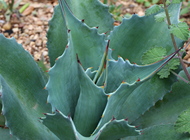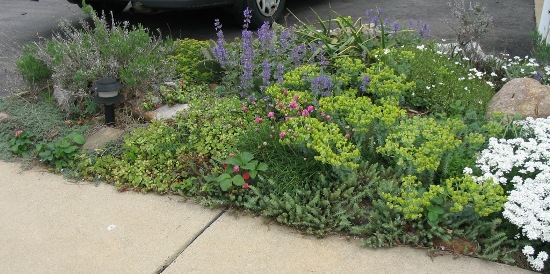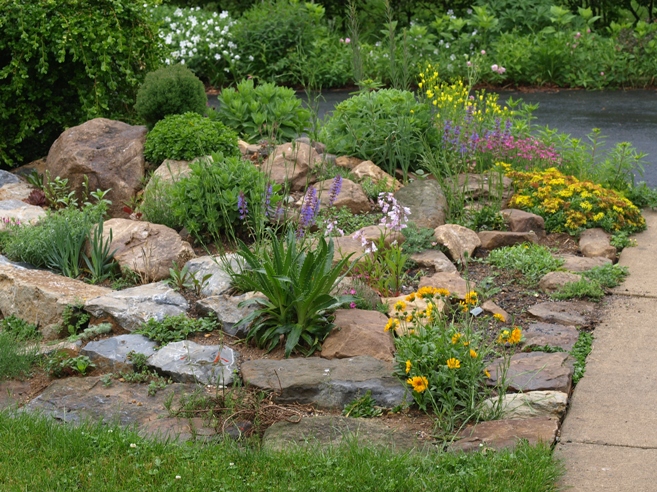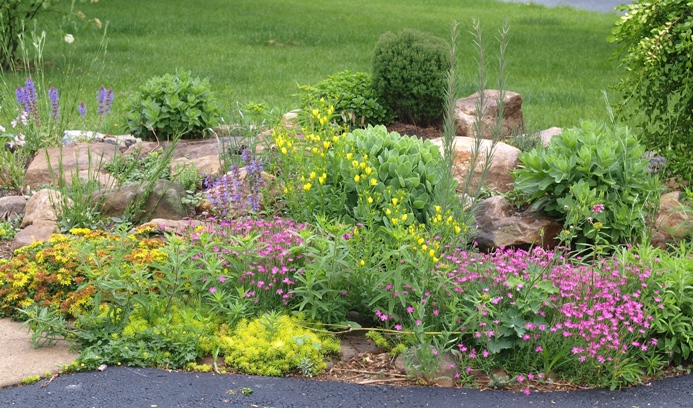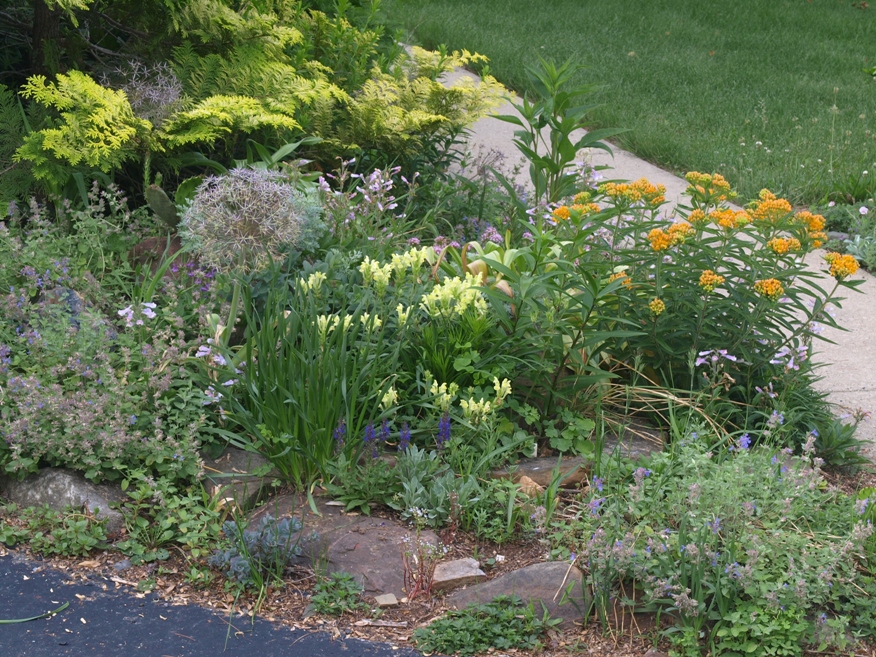The rock garden takes up only a small area in our overall scheme - but it's one of my favorite areas. And since it straddles the front walkway, we all get to admire it up close every day. I can't call myself a rock garden afficionado - that would mean I'd know the ins and outs of alpine soil types, know how to place all the rocks for the most authentic look, and I'd feel comfortable throwing words like "scree" about. But I learned early on that a rock garden is the best way to showcase small perennials, especially those that require excellent drainage. And a few years ago I finally joined the North American Rock Garden Society (NARGS), so I guess that officially makes me a rock gardener. To provide for the needs of those small perennials, our rock gardens are somewhat elevated from yard level, and the native clay has been generously amended with sharp sand, granite grit, rocks dug up from other garden areas (there's a use for everything in our garden), and some compost.
Our original rock garden was a strip between the driveway and the front walkway. It is badly in need of help at this point - the yucca we planted there originally gave up, but left lots of babies that come up all over, amid the tangle of various creeping or sprawling thugs, such as Kamtschat, blue-spruce and dragon's blood sedums, myrtle spurge, catmint, woolly thyme, and sea thrift. We now call this part the rock garden annex.
The newer part of our rock garden, carved out of a corner of our front yard, was originally called the "front corner", but steadily morphed into a rock garden. It is now our main showcase for small alpine species. The photo above was taken a couple months after the most recent upgrade, with many of the plants coming into their own nicely. The blooming specimens include Dracocephalum nutans, Linum campanulatum, Sedum kamtschaticum, Coreopsis auriculata, and Penstemon hirsutus. The photo below shows the garden on the same day in late May, from the opposite direction.
A problem with the rock garden is that I like it so much, I make it just a little bigger every year. That's fine with most types of garden - just cut away a foot width of grass, plant some low-growing perennials in the newly plantable area, and voila! But with a rock garden, it means rearranging the whole deal, to maintain a semblance of slope (I'm not pursuing the boulder field look) and natural rock placement. Ah well, it keeps me busy. A list of plants we grow in the main rock gardenA list of plants we grow in the rock garden annex
Visitors to this page have left the following comments
I welcome comments about my web pages; feel free to use the form below to leave feedback about this particular page. For the benefit of other visitors to these pages, I will list any relevant comments you leave, and if appropriate, I will update my page to correct mis-information. Note that I discard any comments including html markups, so please submit your comment as plain text. If you have a comment about the website as a whole, please leave it in my guestbook. If you have a question that needs a personal response, please e-mail me.
Last modified:
June 07, 2015 |
|||||||||||||||||||||||||||||||||||||||||||||||||||
